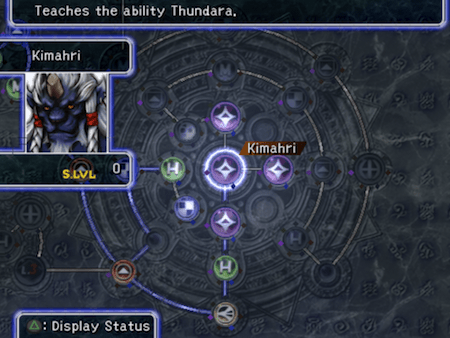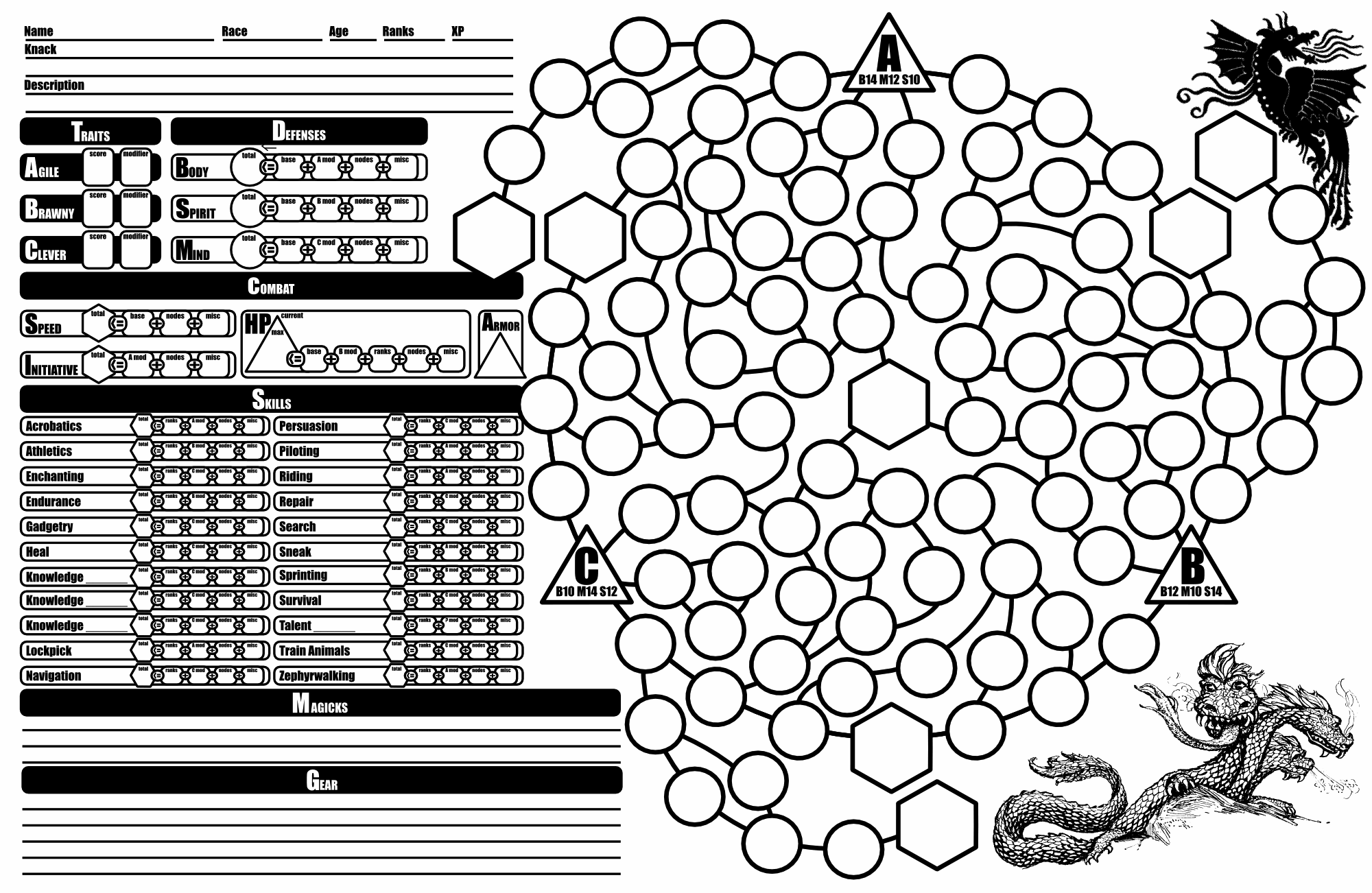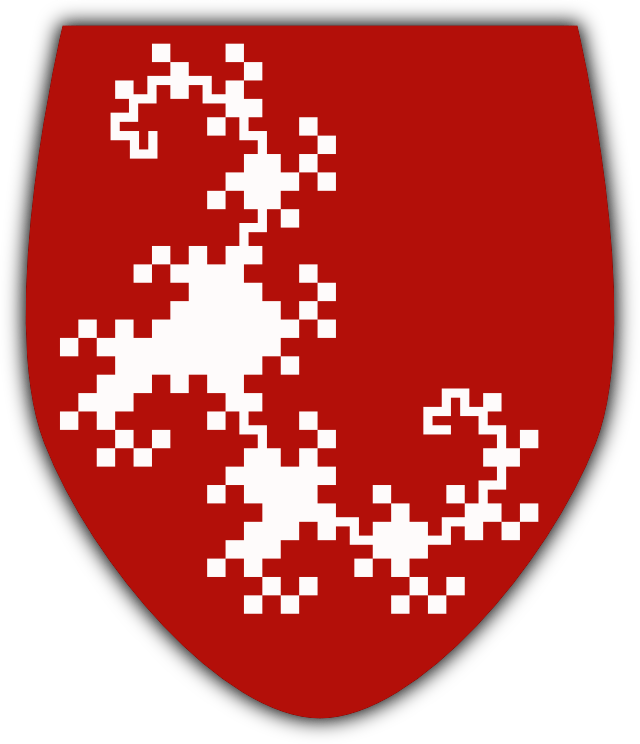Space Fantasy Sheet
The pen-and-paper side of our hobby could really learn something from video games (see previous post).

I don’t mean in an off-putting, game-y, 4th edition way, either. The competitive pressure in the video game space is huge, leading to all sorts of interesting experiments. Because the pressure is more intense—and perhaps also because there are more consumer dollars supporting game makers—this experimentation happens much more quickly than the pen-and-paper side of the hobby.
One of my favorite minor innovations is Final Fantasy X’s Sphere Grid (pictured, right). When I picked FFX up around my 14th birthday, I was fascinated by it. To briefly summarize, the Grid was the best sort of metagame: You would gain Spheres, then spend those Spheres to advance your characters along a winding system of tracks. At various points the tracks would split, and you’d be forced to choose how your character would advance.
Leveling up was no longer a mechanical process, or just a choice of whether to learn a new move. Instead, I was moving around a map, I could take my characters wherever I wanted.
In reality, the Sphere Grid was not that different from a standard ability tree. One ability chained into another ability, and more powerful abilities were locked away behind weak ones1 Your decisions never quite made as much difference as you hoped. But there were key differences.
First, the various branches of the trees wrapped into one another. It wasn’t a tree, it was a huge, inter-related flowchart. A character could wander onto another character’s branch, or double down on their own specialties. The characters weren’t just crafted by the developers, I could play a key role. Making my Tidus—the protagonist—more of a healer changed how I felt about Tidus, even in cutscenes which I had no control over.

Moreover, the fetching map presentation really engaged me with the grid. As a kid, I used to spend hours poring over Tolkein and Might and Magic maps—and I never even cared about Middle Earth or Xeen!2 The map presentation itself was enough to draw me in; and I spent many happy hours doodling my own fantasy maps (example, left).
The beautiful grid presentation of the Sphere Grid similarly attracted me. I loved tracing out the complex loops and chains throughout the grid. I could forecast where a character might be headed. I’d sit and count the number of nodes separating me from an ability I really lusted for, then debate with my brother whether it might be better to shoot for a slightly closer, but less-exciting, ability instead. The visuals really mattered.
I’d love to see this idea explored in the RPG space. There’s nothing to prevent it. A character sheet could have the grid printed right onto it, and as characters improved the player could color in grid points and spread out or specialize as they chose.
A few years back, when I first started flirting with Proper Motion, this was in my initial plans. As the concept has evolved, this idea has started to look out of place with the OSR feeling I’m shooting for with Proper Motion. But I’d still like to see this happen.
With that in mind, perhaps someone might find this draft character sheet I made back then useful. I’ve already put together the grid, now all you have to do is the hard part. My idea was that characters could start from one of the three triangles, then proceed outward/around the edges (greater specialization) or inwards (generalist characters).
The files are an Inkscape SVG; and its PDF and PNG output files (opt for the PDF if you just want to print it out and scribble on it). I’m licensing them all CC BY, so make something of it!

Downloads
All downloads licensed CC BY 3.0. Please attribute by linking to this page.
Space Fantasy Sheet, .svg and .png source
Image Credits
Sphere Grid Illustration from the Final Fantasy Wikia, from Final Fantasy X.
Childhood Map, by me, age 14.
Space Fantasy Sheet, by me.
-
And behind an elaborate system of special spheres, like Warp Spheres, Clear Spheres, Friend Spheres, and Wikia knows what else.↩
-
Although today I am utterly charmed by the simplistic, rectangular shape of Might & Magic’s maps.↩
